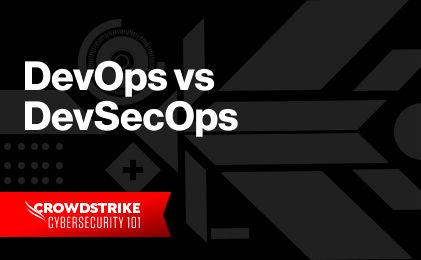Master CNAPPs for Superior Cloud Security
Master CNAPPs for Superior Cloud Security
Modern applications face countless threats every day — sometimes every hour or minute. They need to handle user data securely while preventing access to sensitive data by malicious users or accidental exposure due to development errors. To withstand these threats, they need a strong security posture.
Traditionally, vulnerability scanning has been a key step in managing vulnerabilities in applications. It would scan assets for security vulnerabilities or flawed software development practices. However, these scanning methods aren’t necessarily suitable for every use case. This might be due to the inability to install a system agent or limited system resources. Regardless of the specific reason, these limitations have contributed to the emergence of a new scanless approach.
In this article, we’ll discuss application vulnerability scanning, comparing the different scanning methods available. We’ll also explore how scanless technologies enable a faster development process for teams.
What Is application vulnerability scanning?
Application vulnerability scanning attempts to identify security weaknesses that may be present within a software application. These tools save time and prevent simple security mistakes, such as:
SQL injection
Cross-site scripting (XSS)
Presence of private keys or passwords in the source code
These types of weaknesses can be easily exploited by malicious actors.
Application vulnerability scanning should be part of your organization’s proactive security posture. Along with contributing to stronger security, it also helps you meet compliance and regulatory requirements for application security. Finally, by shining the spotlight on commonly missed vulnerabilities and misconfigurations, it fosters an organizational culture of continuous security improvement in software development.
Types of scanning
You need to ensure simple mistakes don’t become exploitable vulnerabilities that lead to major breaches. When you select an application vulnerability scanning tool and scanning method, you want to maximize the benefits of scanning without compromising your team’s development velocity. Depending on the type of application or software, you should prioritize how a tool integrates into the software build process or the types of vulnerabilities within your application.
Static application security testing (SAST)
SAST tools identify common issues during application development without executing your application's source code. This scanning method provides immediate feedback for developers—but it does not detect runtime issues.
SAST can be implemented within a CI/CD pipeline or via code editor and IDE tools, giving developers a fast and efficient feedback loop. However, SAST might miss vulnerabilities that are more complex.
Dynamic application security testing (DAST)
Unlike SAST-based scanning, which only looks at static source code, DAST scans the running application to identify vulnerabilities that only occur at runtime. Of course, this means you need to build the application and have it up and running. So, this makes DAST much slower to set up and run than SAST. However, you get the benefit of being able to detect runtime security issues.
Interactive application security testing (IAST)
IAST combines SAST and DAST to analyze your software application comprehensively. IAST is more thorough, but it can be complex to implement for vulnerability testing. This is due to the high customization or specialization required for the test suite. This customizationhelps the testing tool understand your app's unique features and how its environment might be exploitable.
IAST tools are often integrated into the application during runtime, and many teams choose to implement it toward the latter stages of a project to detect issues not identified by SAST and DAST, which you might use more in the earlier stages of the development lifecycle.
Software composition analysis (SCA)
Software composition analysis (SCA) identifies vulnerabilities within third-party and open-source components that are often used in modern applications. These tools analyze external dependencies to spot known vulnerabilities, outdated versions, and licensing issues. Since many applications rely heavily on external libraries, SCA is critical in catching vulnerabilities that may not be detected by traditional scanning methods focused on proprietary code.

NetApp
Jyoti Wadhwa, Head of Global Product and Cloud Security at NetApp, shares her thoughts on women in cybersecurity and how CrowdStrike Falcon® Cloud Security delivers runtime protection for NetApp’s multi-cloud environment.
Watch Customer StoryDrawbacks of traditional scanning technology
Traditional application vulnerability scanning methods place a heavy strain on systems, slowing them down. They require resource-hogging scanning agents on your systems. They might strain your network resources as they look up vulnerability definitions. Legacy scanning solutions also require large amounts of operational overhead for credential management, and this itself creates a serious security risk.
These legacy methods can often complicate the scanning process and limit the visibility of vulnerabilities in your application, further slowing development progress for teams and organizations.
Done manually, these scans often produce bulky reports that are quickly outdated. This can lead to lagging and backlogged vulnerability remediation in your application. The more you scan, the more vulnerabilities you will find in your application from third-party packages and libraries in modern applications and systems. This increased noise makes it difficult for developers to identifyand prioritize truly relevant vulnerabilities.
Embracing agentless technology with CrowdStrike Falcon
Application vulnerability scanning is important for any modern application. You need to ensure that simple security mistakes don't turn into application vulnerabilities that can be exploited by others, leading to a massive security breach. To detect these vulnerabilities, different types of scanning tools assist in the software development process by identifying these vulnerabilities—from the source code stage to complex interactive tests on a running application. These methods have downsides that must be balanced by development teams. Ideally, you want to ensure vulnerability scanning picks up the vulnerabilities they are looking for without slowing down application development.
Teams that use traditional agent-based vulnerability scanning can be slowed down significantly when trying to improve their application's security posture. They face challenges that include:
Long wait times for scans to complete
Scanning tools and installed agents that over-burden computing resources
Non-trivial maintenance effort to keep agents running
CrowdStrike Falcon ASPM provides continuous, real-time monitoring of applications to identify and remediate vulnerabilities throughout the software development lifecycle. It helps teams quickly detect misconfigurations, vulnerabilities, and potential attack surfaces, improving your organization’s overall application security posture.
Request a free 15-day trial to see how Falcon ASPM can improve your overall security posture today.







